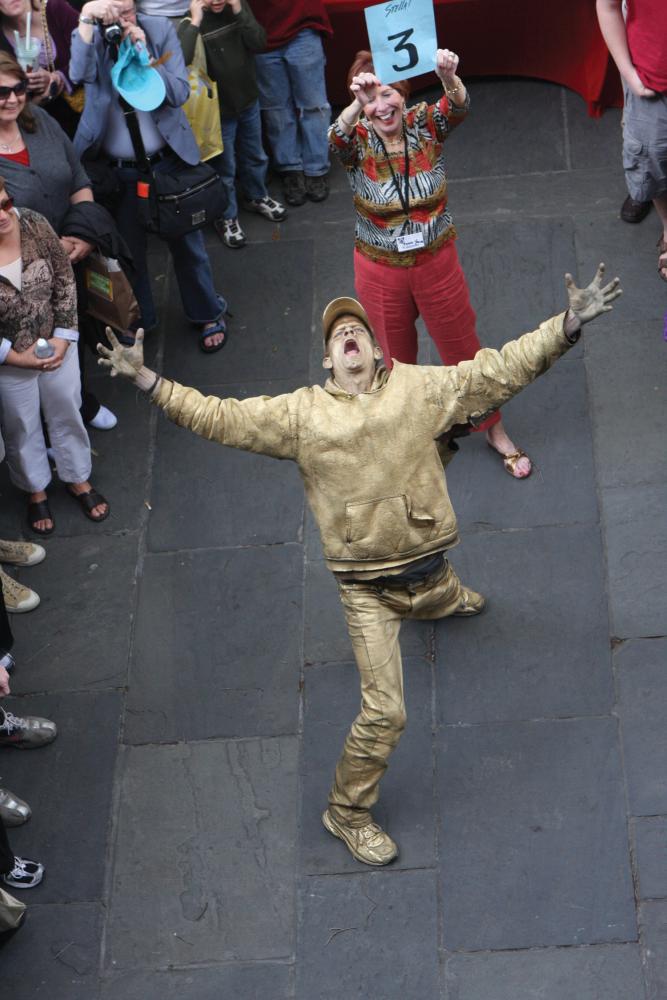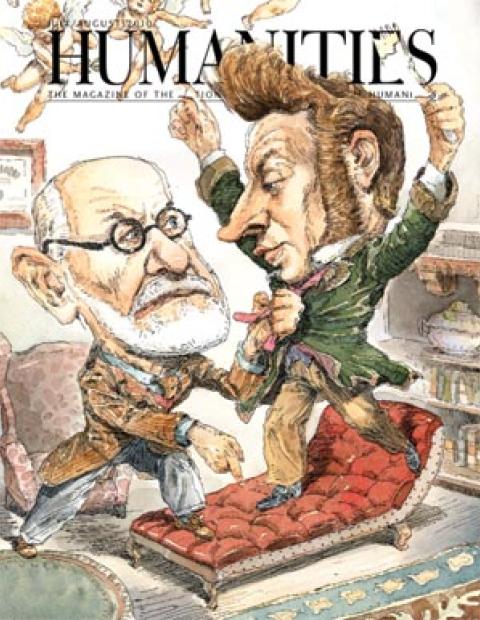Tom Williams arrived in New Orleans from his hometown of St. Louis the day after Christmas, 1938, looking for a “new scene” to inspire his writing (and hoping to land a job with the Louisiana branch of the Federal Writers’ Project). The twenty-eight-year-old was immediately awestruck by the French Quarter’s decaying charm—rust-eaten lace ironwork, flophouses next door to pricey antique shops, dark narrow passages leading to lush courtyards “full of palms, vines and flowering poinsettia,” and the “rattle-trap” streetcars—one named Desire and the other Cemeteries.
Two days later, from his small hotel room on Royal Street, he wrote: “I am delighted, in fact enchanted with this glamorous, fabulous old town. . . . Here surely is the place that I was made for if any place on this funny old world.” In New Orleans, Tom found his voice, changed his name to Tennessee, and started writing plays that transformed the American stage and made him a household name. Between 1944 and his death in 1983, Williams wrote some thirty full-length plays, two that won Pulitzers.
Williams’s characters have taken up permanent residence in American culture, even finding their way into the newest Disney princess feature, where the wealthy sugar mill owner is called Big Daddy and the family dog is named Stella. Williams’s stories of lost souls have garnered enthusiastic audiences around the globe, although Bolshoi Pa doesn’t quite translate the “Southern-ness” of Big Daddy.
“He changed our idea of beauty,” said award-winning playwright and film director John Patrick Shanley at the opening night gala of the 24th Annual Tennessee Williams/New Orleans Literary Festival supported by the Louisiana Endowment for the Humanities.
Shanley delivered a moving tribute to Williams on the set of The Night of the Iguana at the Le Petit Théâtre du Vieux Carré, just steps away from the St. Peter Street apartment where Williams wrote a major portion of A Streetcar Named Desire. As part of the gala event, actress Lois Smith masterfully performed a monologue from Orpheus Descending, revisiting the role of Carol, which she played in the original 1957 production: “I used to be what they call a Christ-bitten reformer. You know what that is?—A kind of benign exhibitionist. . . . Well, all that was a pretty long time ago, and now I’m not a reformer any more. I’m just a ‘lewd vagrant.’”
Every March, those who love books, the works of Tennessee Williams, and New Orleans descend upon the French Quarter—the place Williams called his “spiritual home”—for five days of author readings, walking tours, panel discussions, cocktail receptions, master classes, theater productions, restaurant offerings, film screenings, poetry slams, jazz performances, a scholars’ conference, and a wacky Stella and Stanley shouting contest, commonly known as the Stell-Off.
As I made my way to Jackson Square to see what all the shouting was about, I realized I had underestimated how popular the Stell-Off was. Throngs of people were gathered (a credit to New Orleans’s charitable open-container tradition perhaps) to hear the iconic yell, “STELLAAA!” Although I couldn’t see the contestants, I could certainly hear them—except for one, a mime, who came in third.
Another popular event, although not as mobbed, was the panel discussion “I Remember Tennessee” with Smith, along with playwright Edward Albee and Kenneth Holditch, professor emeritus of English of the University of New Orleans and one of the founders of the festival.
Holditch recalled how Williams wrote the character of Val Xavier in Orpheus Descendingwith Elvis in mind. Holditch (who went to junior high school with Elvis in Tupelo, Mississippi) said, “Tennessee was very fond of Elvis. He thought he was wonderful. When Tennessee and his mother were in Hollywood, they met Elvis Presley. He (Tennessee) wanted him to star in Orpheus Descending, but Colonel Parker, of course, was having nothing to do with it.” Adding, “It’s the reason why Val has a guitar.”
“His laugh was very loud,” remembered Albee, who imitated it for the audience. “When I was writing Who’s Afraid of Virginia Woolf? , I thought it would be fun to have a couple of lines in there that would amuse Tennessee. So in Act 3, when George comes in with the flowers, what does he say?: ‘Flores; flores para los muertos. Flores’—from Streetcar. And in the second act there is a reference, I believe, to a play called The Poker Night, which was—you may not know this—the original title of A Streetcar Named Desire. So I thought that would amuse Tennessee. And he told me that it did.”
Although Williams was not the first writer to head for the bohemian spirit of the French Quarter—William Faulkner, Kate Chopin, Sherwood Anderson, and Lillian Hellman all spent time living in and writing about New Orleans—the bond between Williams’s plays and New Orleans is particularly strong. “Later in his life, Williams insisted that more than half of his best work had been written in New Orleans,” says Holditch, including short stories, short plays, poems, and three of his most successful full-length dramas—Streetcar, Suddenly Last Summer, and Vieux Carré.
Williams wrote: “If I can be said to have a home, it is in New Orleans, where I’ve lived off and on since 1938 and which has provided me with more material than any other part of the country.” He fondly called the French Quarter, “a place in love with life.”




